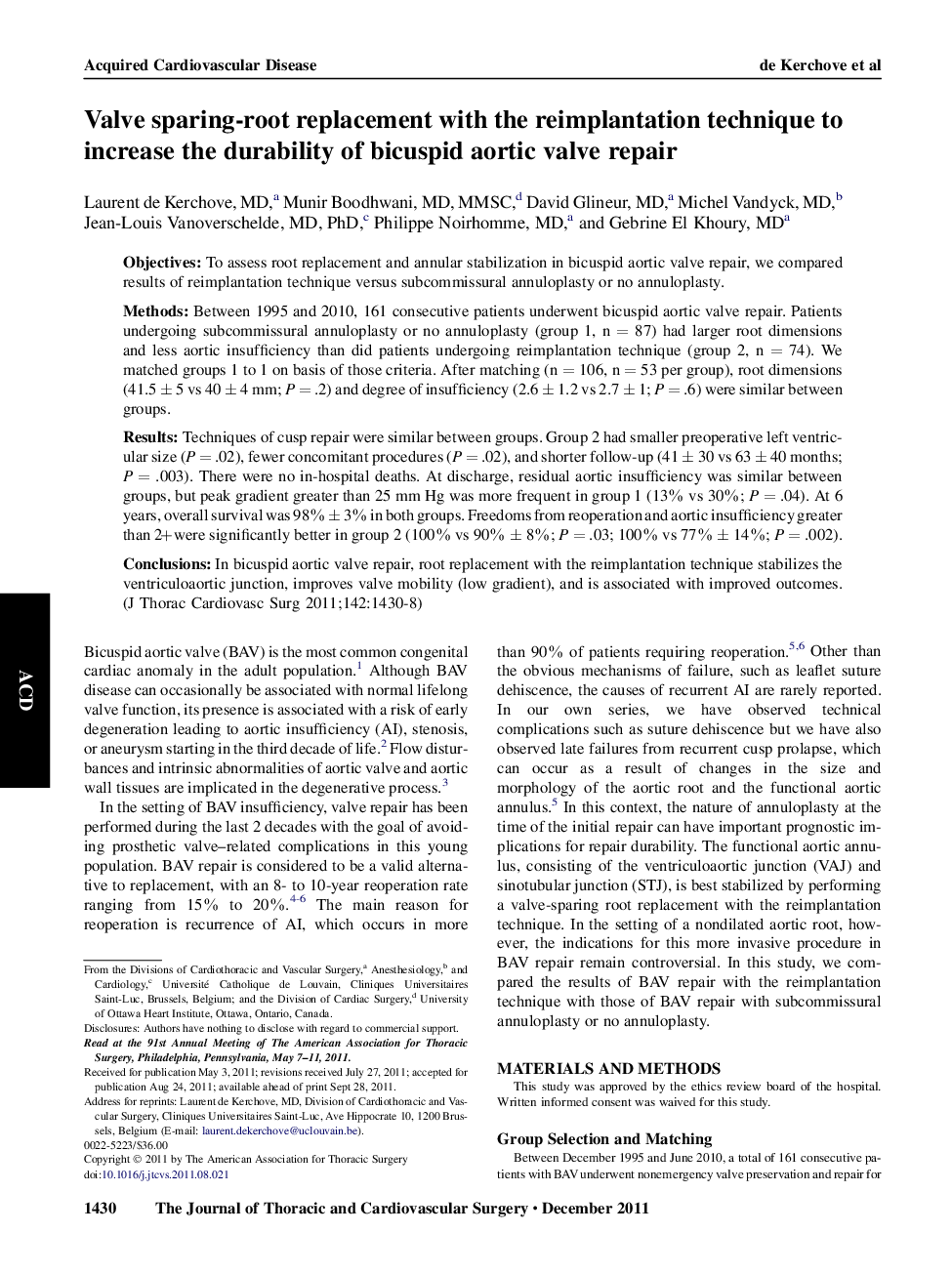| Article ID | Journal | Published Year | Pages | File Type |
|---|---|---|---|---|
| 5991968 | The Journal of Thoracic and Cardiovascular Surgery | 2011 | 9 Pages |
ObjectivesTo assess root replacement and annular stabilization in bicuspid aortic valve repair, we compared results of reimplantation technique versus subcommissural annuloplasty or no annuloplasty.MethodsBetween 1995 and 2010, 161 consecutive patients underwent bicuspid aortic valve repair. Patients undergoing subcommissural annuloplasty or no annuloplasty (group 1, n = 87) had larger root dimensions and less aortic insufficiency than did patients undergoing reimplantation technique (group 2, n = 74). We matched groups 1 to 1 on basis of those criteria. After matching (n = 106, n = 53 per group), root dimensions (41.5 ± 5 vs 40 ± 4 mm; P = .2) and degree of insufficiency (2.6 ± 1.2 vs 2.7 ± 1; P = .6) were similar between groups.ResultsTechniques of cusp repair were similar between groups. Group 2 had smaller preoperative left ventricular size (P = .02), fewer concomitant procedures (P = .02), and shorter follow-up (41 ± 30 vs 63 ± 40 months; P = .003). There were no in-hospital deaths. At discharge, residual aortic insufficiency was similar between groups, but peak gradient greater than 25 mm Hg was more frequent in group 1 (13% vs 30%; P = .04). At 6 years, overall survival was 98% ± 3% in both groups. Freedoms from reoperation and aortic insufficiency greater than 2+ were significantly better in group 2 (100% vs 90% ± 8%; P = .03; 100% vs 77% ± 14%; P = .002).ConclusionsIn bicuspid aortic valve repair, root replacement with the reimplantation technique stabilizes the ventriculoaortic junction, improves valve mobility (low gradient), and is associated with improved outcomes.
